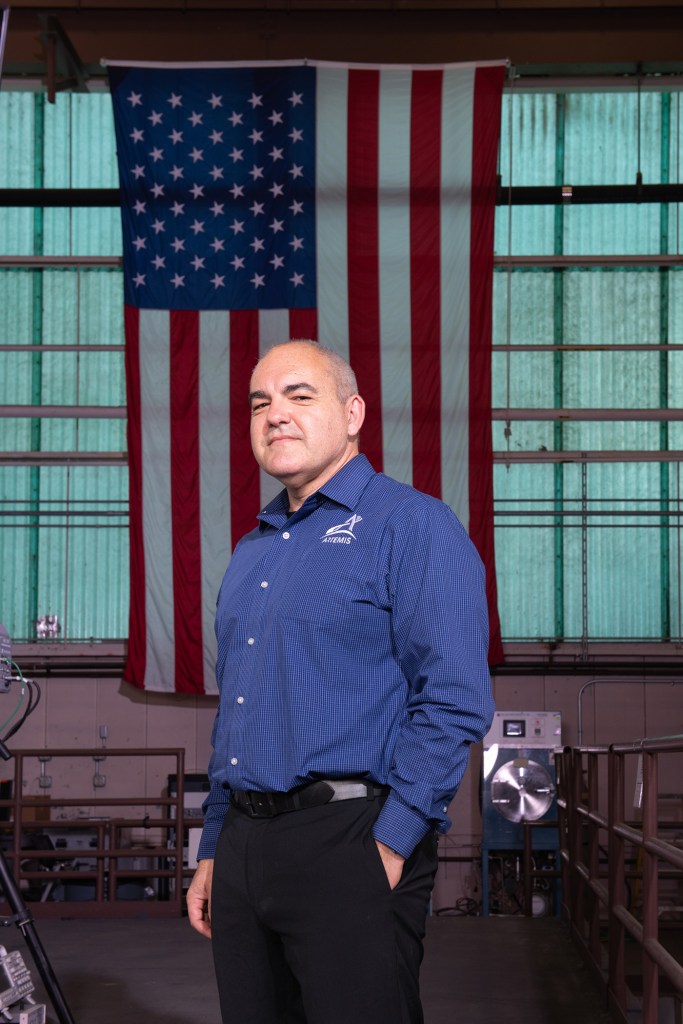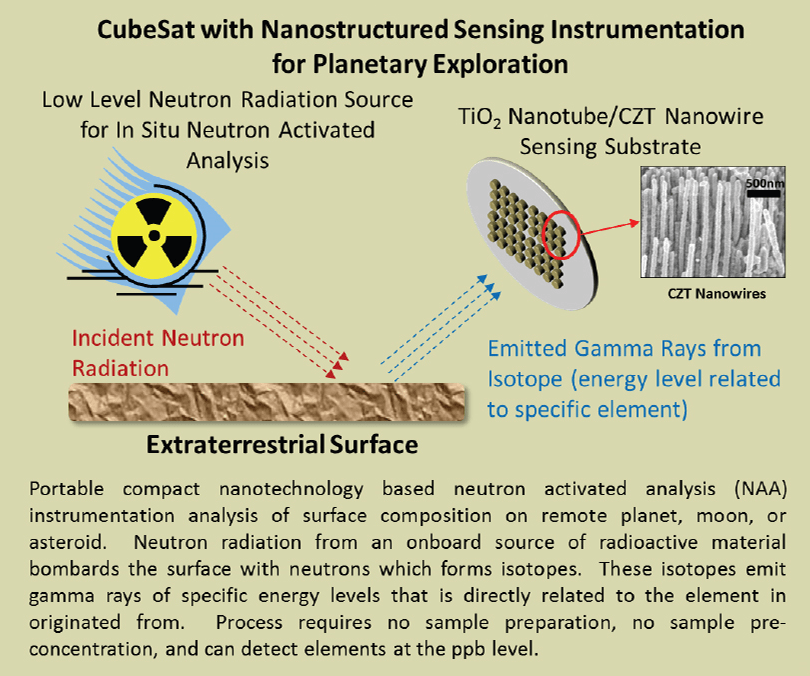Joseph Wang
University of Southern California
Description
The University of Southern California and University of Utah propose an innovative concept study to develop a CubeSat integrated with a new, nanosensor based instrument for low cost in situ analysis of asteroid and comet composition. The new instrument utilizes a TiO2 nanotube sensing platform with integrated compound semiconductor nanowires to determine surface composition element via Neutron Activated Analysis (NAA). This technique requires no sample preparation and collection operation, and is able to detect over 74 trace elements in parts per billion (ppb) range. The instrument is low cost, low power, low mass, compact, and disposable, thus making it potentially useful for integration with a CubeSat. This research will investigate the feasibility of an innovative, low cost, CubeSat based planetary mission concept which applies the proposed instrument for in situ ground truth analysis of small asteroids and comets.

































